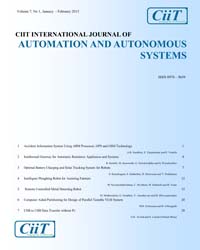Evolution in the Area of Smart Load Frequency Control Using Passino Technique
Subscribe/Renew Journal
Large power systems are normally divided into control areas based on the principle of coherency. The coherent areas are interconnected through tie lines which are used for contractual energy exchange between areas and provide inter area support during abnormal condition. A mismatch in the real power balance affects primarily the system frequency but leaves the bus voltage magnitude unaffected. The problem of real power balance in a power system is termed as smart load frequency control problem. The present work deals with the optimization of integral controller gain of two area thermal reheat system with generation rate constraint, first with classical optimization method and then with Passion technique. Comparison of convergence characteristics of Passino and classical techniques reveals that Passino is quite faster in optimization, leading to reduction in computational burden, giving rise to minimal computer resource utilization.
Keywords
Load Frequency Control, Passino Technique, Real Power Mismatch, Tie-Line Power.
User
Subscription
Login to verify subscription
Font Size
Information

Abstract Views: 358

PDF Views: 1



